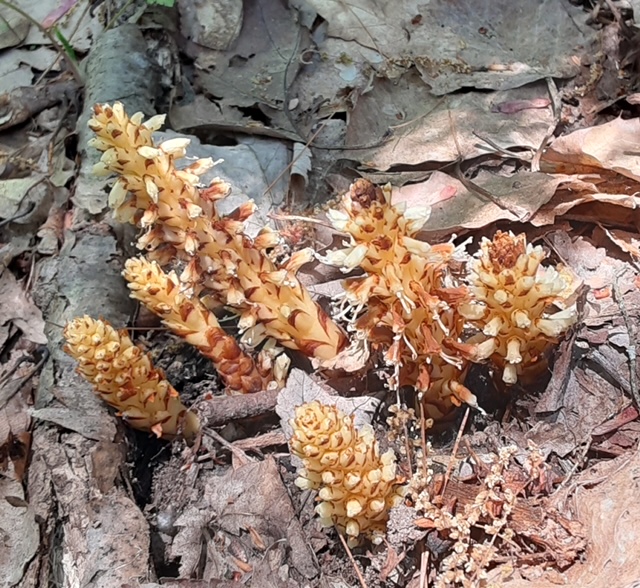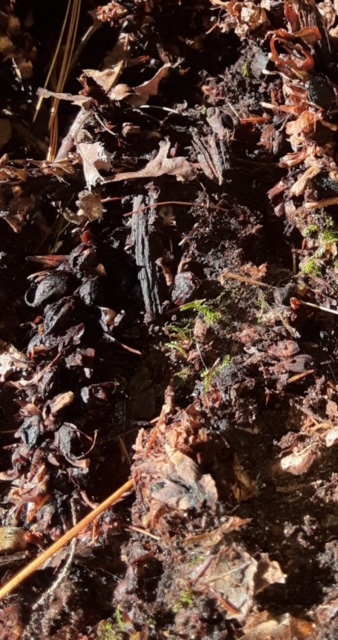By: Susan Sprout
Squawroot is a strange and wonderful plant that I knew only from photos in plant books. In late fall of 2020, my plant buddy Debbie and I came upon what looked like its sad remains. Wild and crazy, I jumped up and down, wahooing! Then, the waiting began. Finally, after three visits this spring, I found it had finally shouldered its way up through the pile of oak leaves that had blanketed it over winter. And, here it is!

A member of the Orobanchaceae or Broom-rape Family, known for being parasitic herbs without chlorophyll. Squawroot, Conopholis americana, is a native ranging from eastern Canada to Florida. Its genus name comes from the scales it has instead of leaves (pholis) and when dried it resembles evergreen tree cones (conos). Most of this plant’s biomass is underground where it develops for four years before emerging to bloom. It develops swollen knobs as its root system attaches to an oak root and slowly receives from the sap enough nourishment and energy to reproduce. Its flowers are cream-colored in dense fleshy unbranched spikes.

It is a perennial plant that will live up to ten years in forests where its presence and relative abundance may indicate the forest’s age and stability. Native American usage of it was for menopause symptoms and reproductive problems. Amazingly, Squawroot has estrogen-like properties that doctors today would use for just such conditions. Its flowers are pollinated by flies and bumblebees and become food for deer and bears. Where conditions are right…shady, oak-forested sites, large colonies often flourish.

